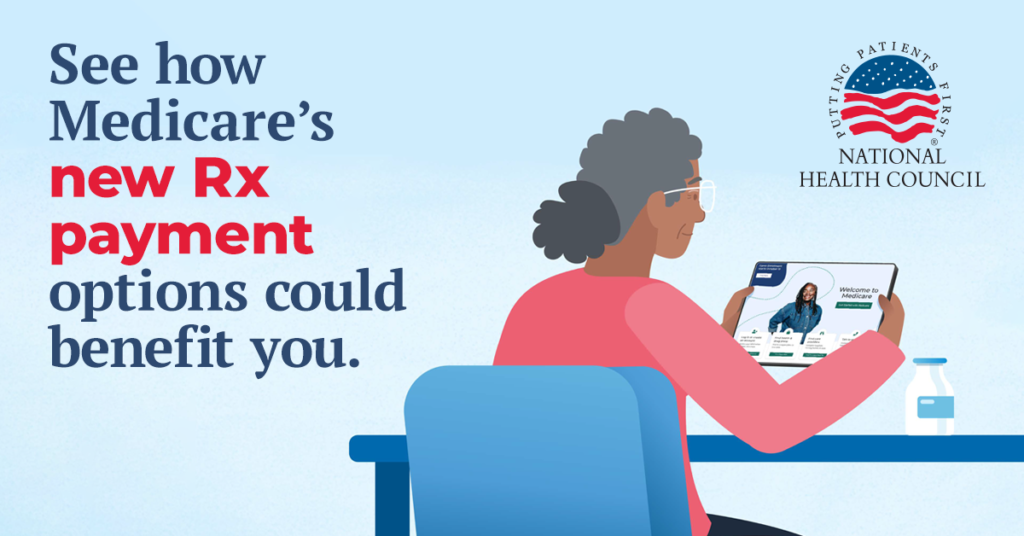January brought important changes for the roughly 53 million seniors enrolled in Medicare prescription drug plans.
Some of these changes are automatic, while others require patients to proactively enroll. Patients who participated in open enrollment (Oct. 15-Dec. 7, 2024) are already noticing changes.
To help patients understand and navigate these changes, the National Health Council (NHC) and several other patient advocacy groups launched outreach and education campaigns. Bio.News sat down with Jennifer Dexter, Vice President of Policy at the National Health Council, to learn how these changes will impact patients.
“Medicare is rolling out several new benefits in 2025,” explains Dexter. “These new benefits may be confusing to beneficiaries, and coupled with other big changes, may result in Medicare plans looking very different going forward.”
NHC is eager to hear how the new changes and enrollment systems are affecting patients or caregivers. To share your experience (good, bad, or indifferent), you can contact MedicarePartD@nhcouncil.org.
Here’s more on the Medicare Part D changes and how they’re affecting patients.
Out-of-pocket costs capped at $2,000
For the first time, beneficiaries’ total out-of-pocket prescription drug costs, including copays and coinsurance, will be capped at $2,000 per year. In many ways, this is the highest-profile change to Medicare in 2025. The cap includes the patient’s deductible, including copayments and coinsurance. The cap covers stand-alone Part D and Medicare Advantage prescription drug plans. This cap is applied automatically, although it has a few limits—and it is on top of any monthly payments for insurance premiums.
“This cap can be especially helpful for those with high-cost prescriptions or chronic conditions,” Dexter explains.
Watch NHC’s video explainers of the changes.
These cost-savings are on top of changes that took effect last year, including $0 out-of-pocket (OOP) costs for recommended vaccines under Part D, and a $35 monthly cap on insulin copay costs. As Bio.News reported last year, both are popular measures supported by patients and the biotech industry.
Activation of the Medicare Prescription Payment Plan
For the first time, patients enrolled in stand-alone Medicare Part D plans and Medicare Advantage will have the option to spread the drug costs out over the year. However, patients must enroll to take advantage of this program.
Also known as “smoothing,” the Medicare Prescription Payment Plan (MPPP) allows patients to spread (or “smooth”) the cost of medications over the course of a year, rather than having to deal with higher prescription drug costs that jump up one month and down another.
This may be especially helpful for patients who struggle to afford unexpected larger payments, including patients with higher coinsurance or copays, living on a fixed income, and/or who may have trouble paying for drugs upfront and prefer a bill-later setup.
“While the program can help patients cover costs in a more predictable manner, the program doesn’t change the total amount patients owe, and the program may not be ideal for everyone,” explains Dexter. “That is why NHC is providing a lot of resources including a new interactive tool to help patients determine whether the MPPP may be right for them.”
As Medicare.gov explains, some things to consider when deciding whether to participate in the MPPP include:
- What are your expected yearly drug costs?
- Is the drug cost the same each month?
- Are you considering signing up for the payment option late in the calendar year (after September)?
- Are you willing to change how you pay for your drugs?
- Are you eligible for Extra Help from Medicare?
- Are you eligible for a Medicare Savings Program?
- Can you get help paying for your drugs from other organizations, like a State Pharmaceutical Assistance Program (SPAP), a coupon program, or other health coverage?
Patients were able to enroll in MPPP at the end of last year, and the program went into effect on January 1, 2025. Patients are still able to enroll at any time during the year. However, patients should consider the timing.
“For example, the MPPP program may not actually be ideal for patients that sign up late in the year because as new out-of-pocket drug costs are added to your monthly payment, there are fewer months left in the year to spread out your payments,” says Dexter. “We encourage beneficiaries to talk it over with family and trusted health care providers, review their financial situation as a whole, and explore the educational resources NHC and others have provided.”
Medicare’s Extra Help Program
This year, more people are eligible for Medicare’s Extra Help Program.
“The Low-Income Subsidy Program is expanding as well to provide reduced Part D costs for more patients living with limited income,” says Dexter. “This has notably expanded to include beneficiaries living with an income at up to 150% of the federal poverty level.”
The program waives monthly premiums and annual deductibles for eligible beneficiaries. It also limits copays for plan-covered drugs to not exceed $12.15 per 30-day supply, per Medicare.gov. Beneficiaries can apply at any time before or after enrolling in Part D.
“Knowledge is power,” asserts Dexter. “We at NHC are launching this outreach and education program to ensure beneficiaries know their options and can make the best decision for themselves and their families.”
Medicare Part D changes ahead
While the changes to Part D have already gone into effect, there is still time for patients to learn the ins and outs of their new plan—and potentially to get extra help.
Groups like NHC and the Medicare Access for Patients Rx (MAPRx) coalition have a number of resources for patients and caregivers to help navigate the issue. Feedback about how the new process is working, and what was confusing for patients or caregivers, helps make improvements for next year.
Additionally, in response to these and other changes, some plans might modify whether certain medications are covered and whether or not there are additional requirements for coverage such as prior authorization.
“All Medicare beneficiaries and their families/caregivers should take time this fall to evaluate their options,” Dexter notes, “even if they are happy with their current plan.”




